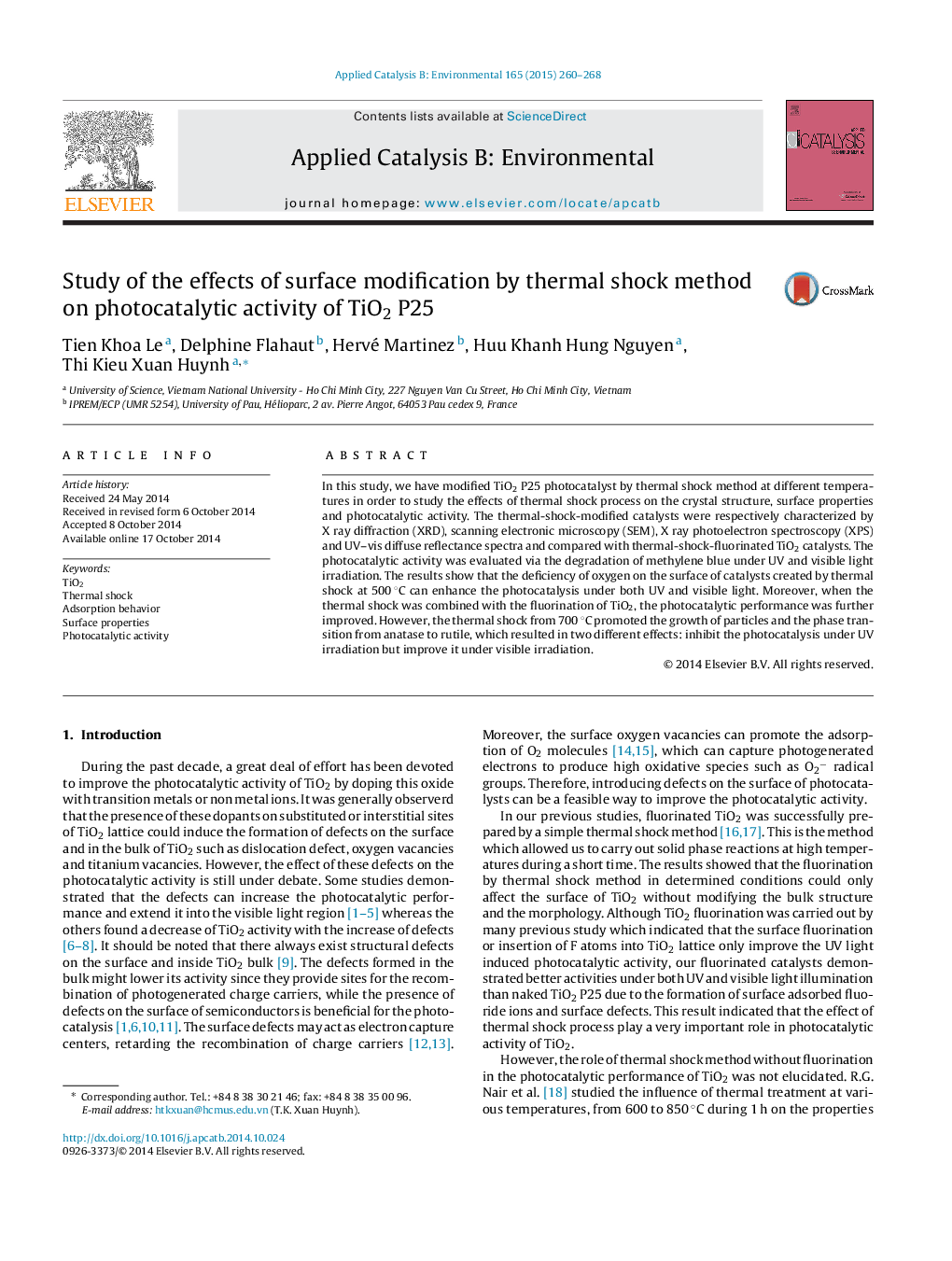| Article ID | Journal | Published Year | Pages | File Type |
|---|---|---|---|---|
| 45556 | Applied Catalysis B: Environmental | 2015 | 9 Pages |
•Modification of TiO2 P25 by thermal shock at different temperatures.•The thermal shock creates the surface oxygen deficiency.•The surface oxygen deficiency can improve the photocatalytic activity of TiO2.•Thermal shock above 500 °C results in the anatase–rutile phase transition.•When TiO2 is fluorinated by thermal shock, the activity is further improved.
In this study, we have modified TiO2 P25 photocatalyst by thermal shock method at different temperatures in order to study the effects of thermal shock process on the crystal structure, surface properties and photocatalytic activity. The thermal-shock-modified catalysts were respectively characterized by X ray diffraction (XRD), scanning electronic microscopy (SEM), X ray photoelectron spectroscopy (XPS) and UV–vis diffuse reflectance spectra and compared with thermal-shock-fluorinated TiO2 catalysts. The photocatalytic activity was evaluated via the degradation of methylene blue under UV and visible light irradiation. The results show that the deficiency of oxygen on the surface of catalysts created by thermal shock at 500 °C can enhance the photocatalysis under both UV and visible light. Moreover, when the thermal shock was combined with the fluorination of TiO2, the photocatalytic performance was further improved. However, the thermal shock from 700 °C promoted the growth of particles and the phase transition from anatase to rutile, which resulted in two different effects: inhibit the photocatalysis under UV irradiation but improve it under visible irradiation.
Graphical abstractFigure optionsDownload full-size imageDownload as PowerPoint slide
